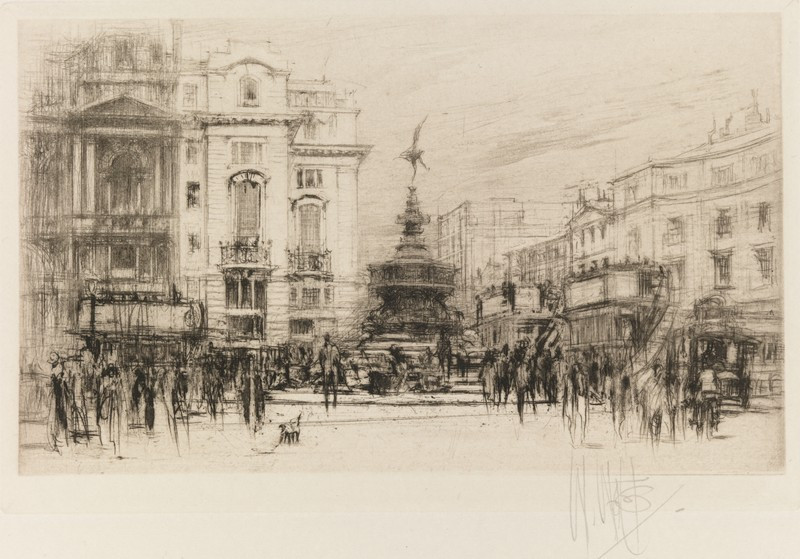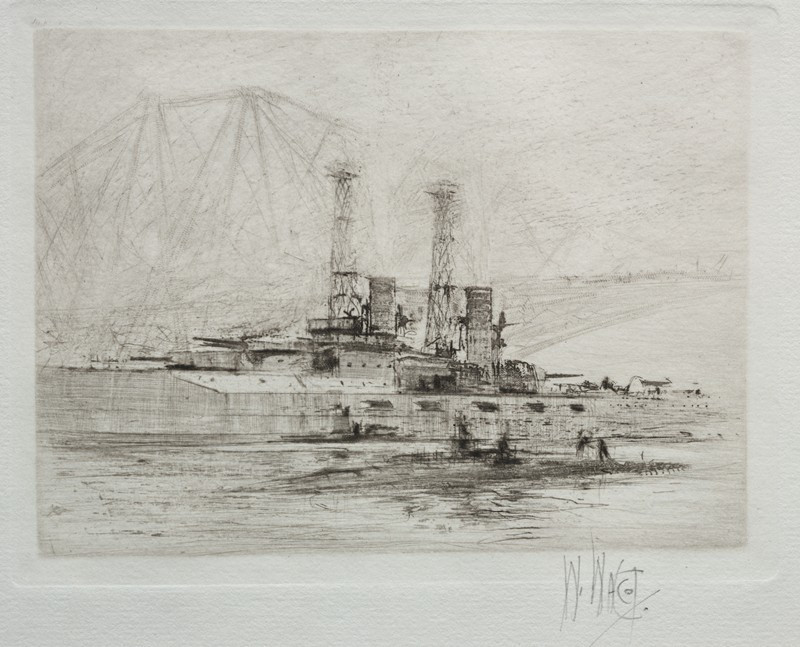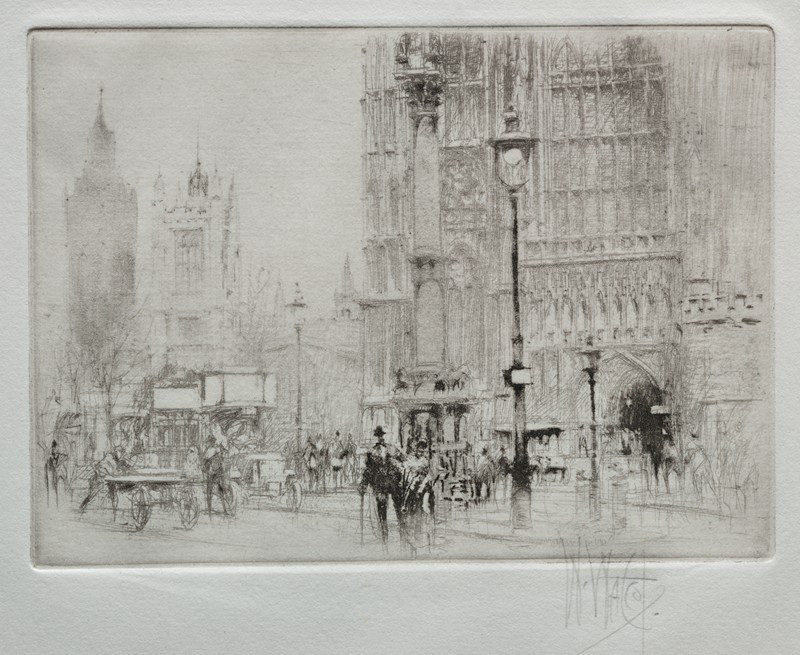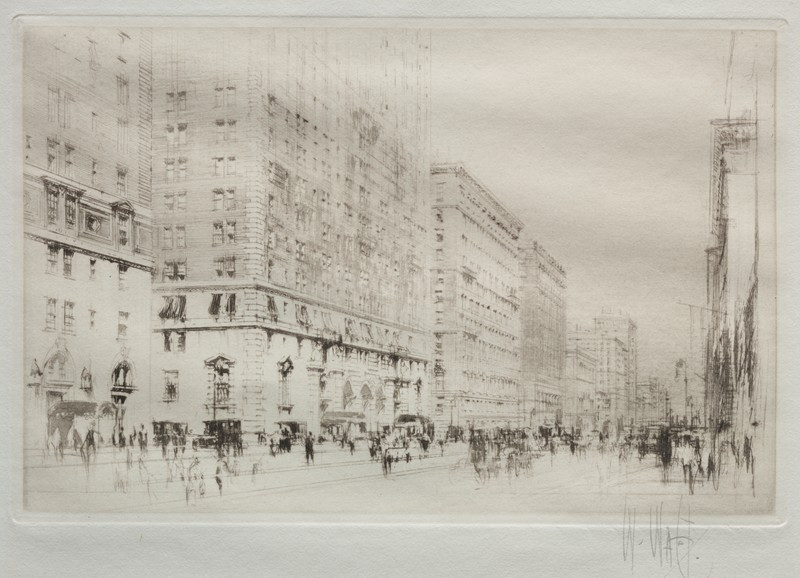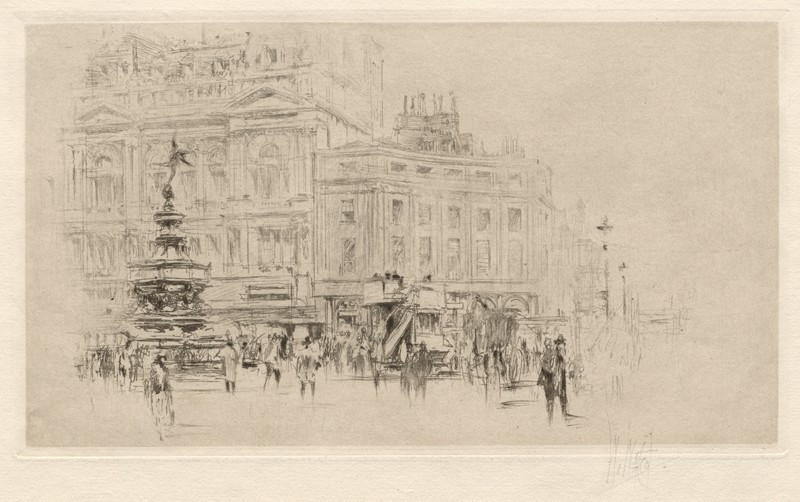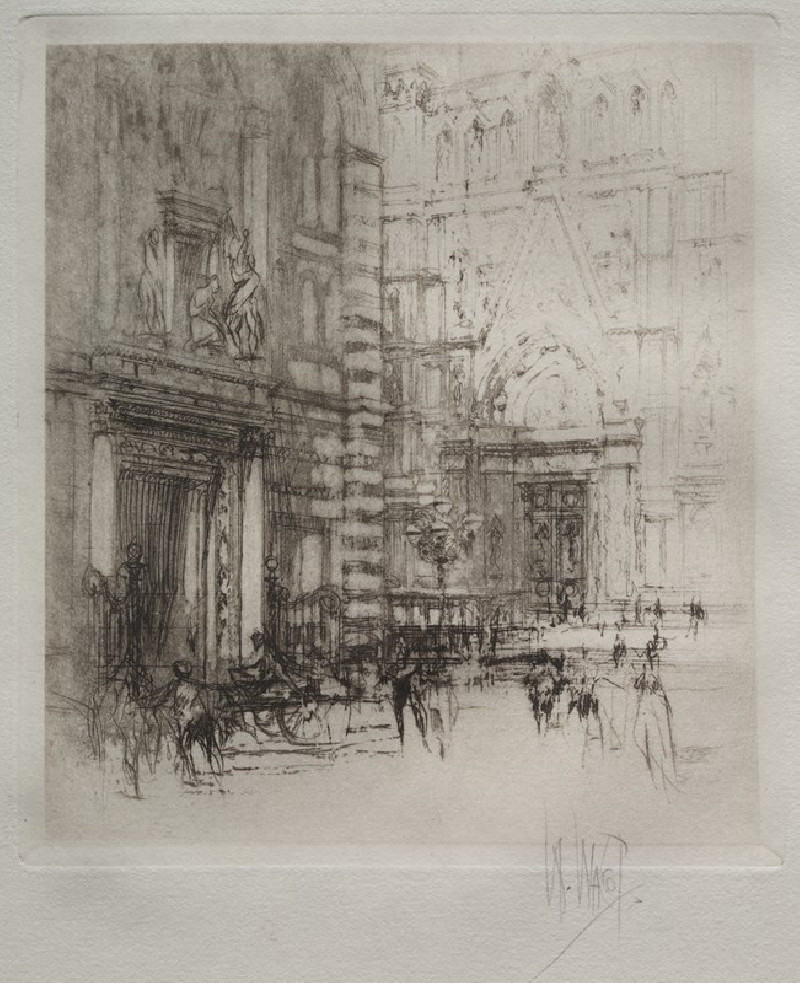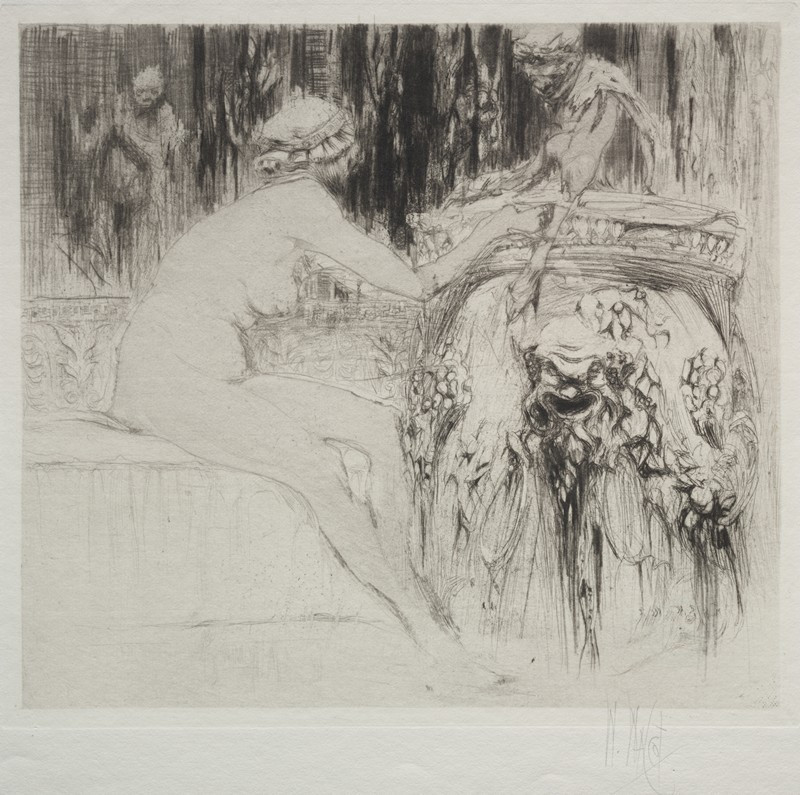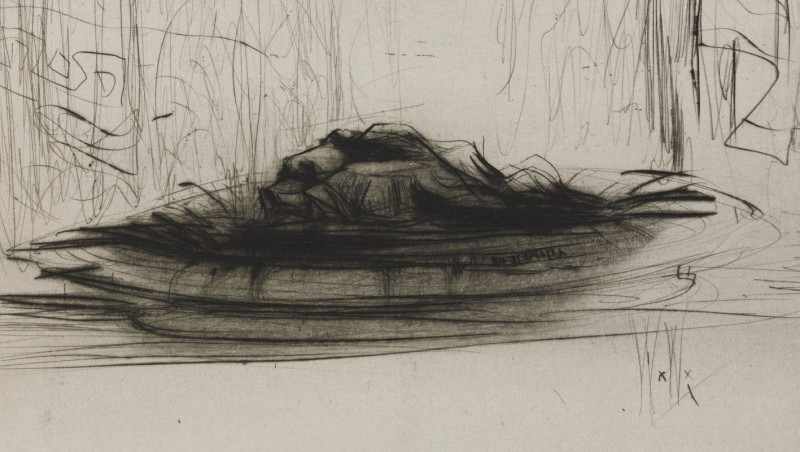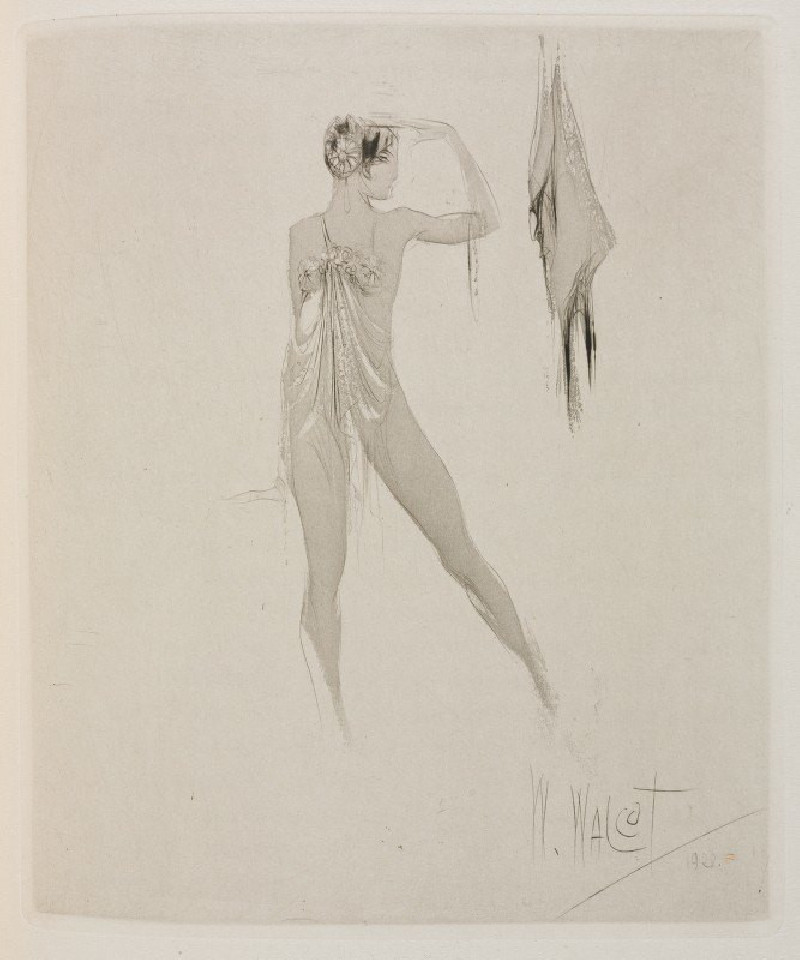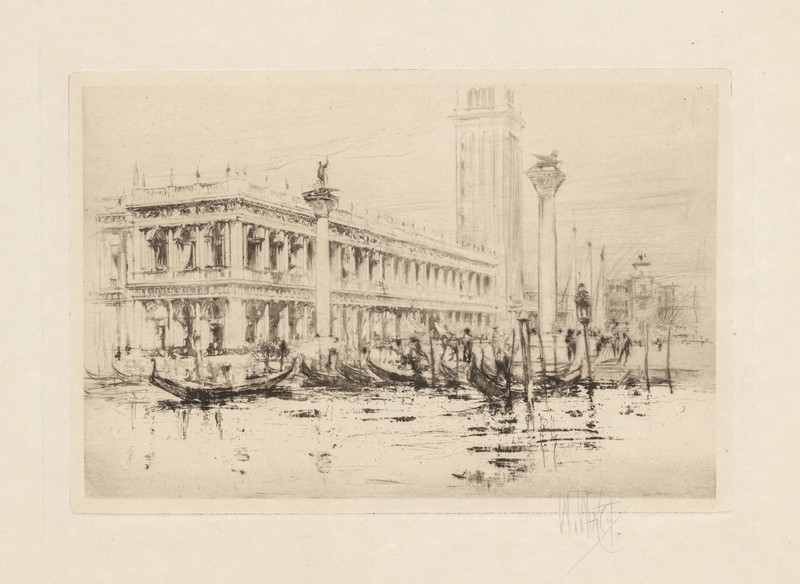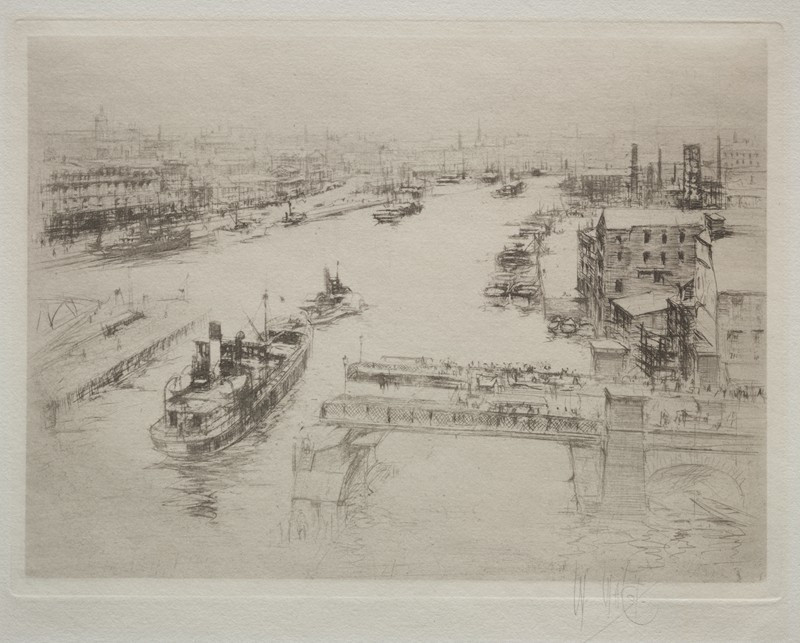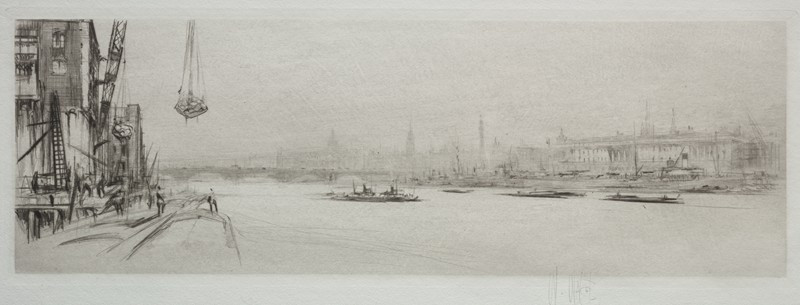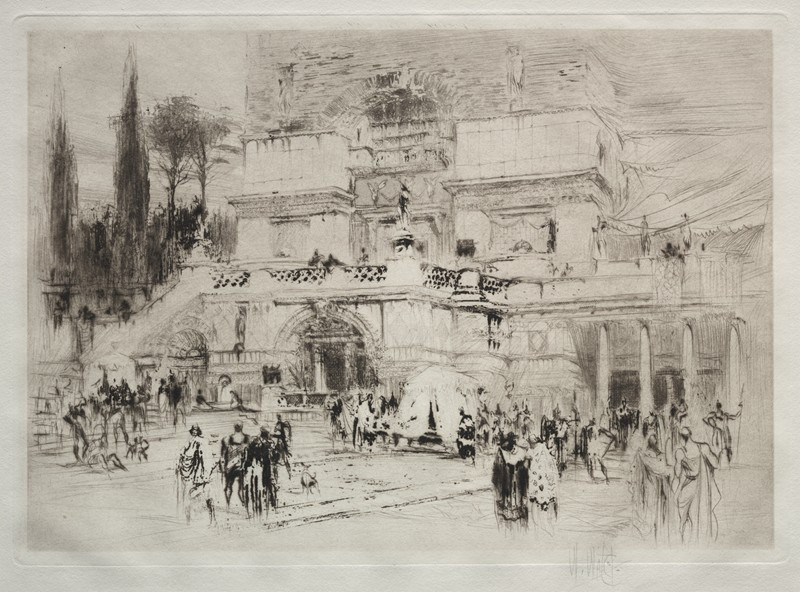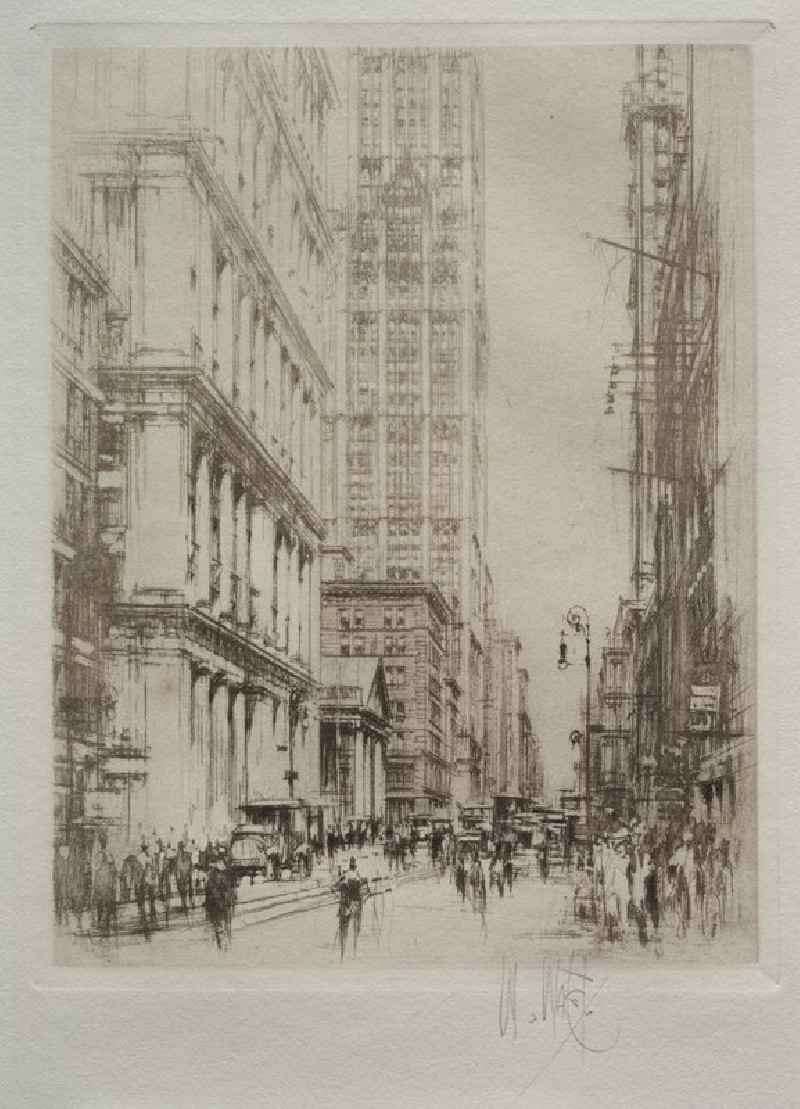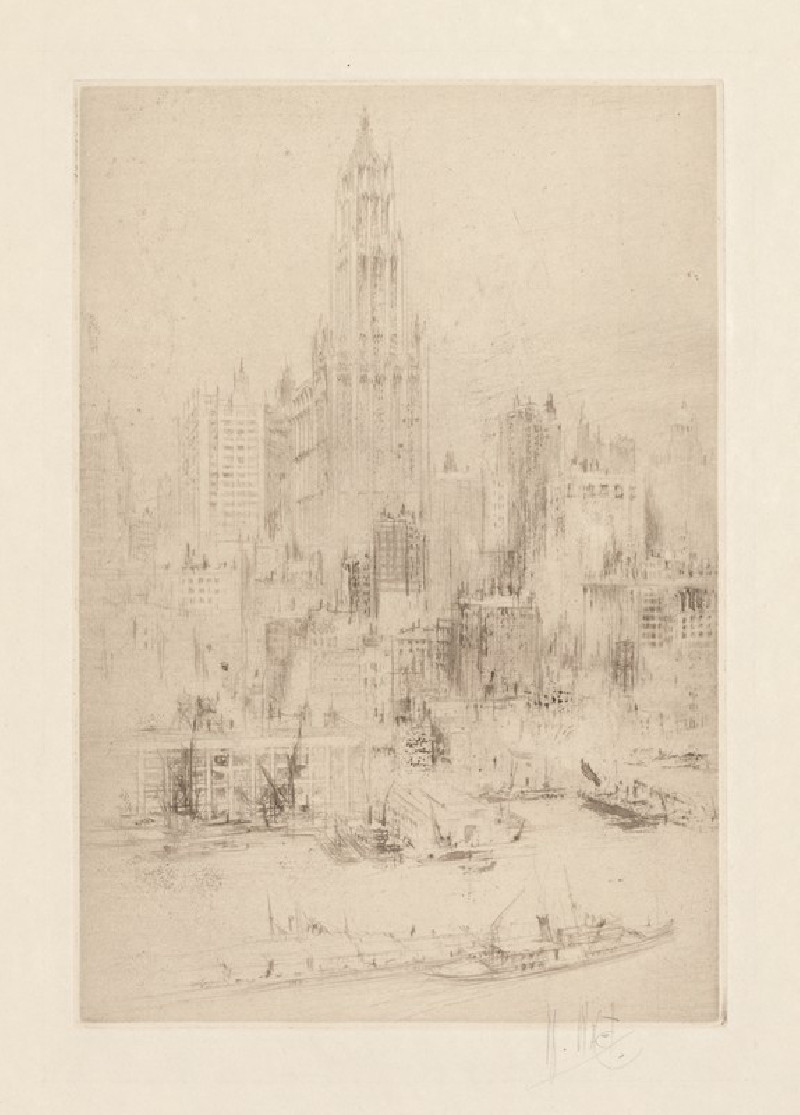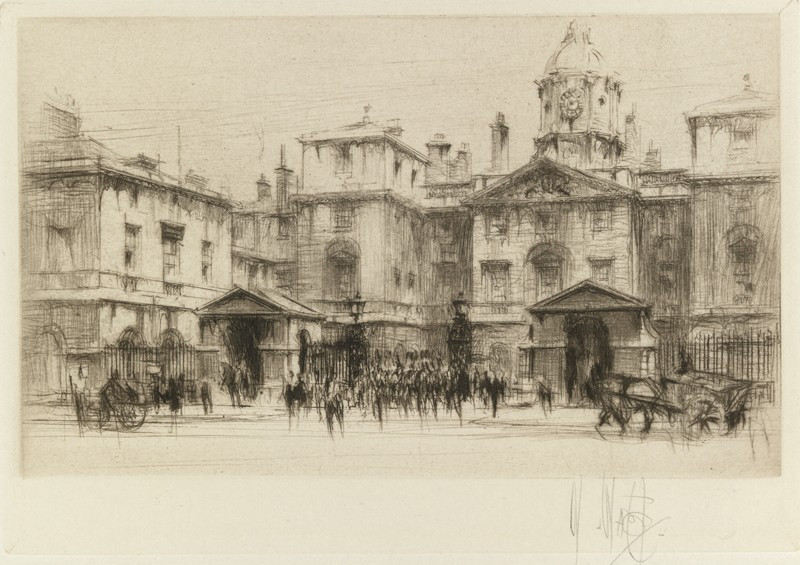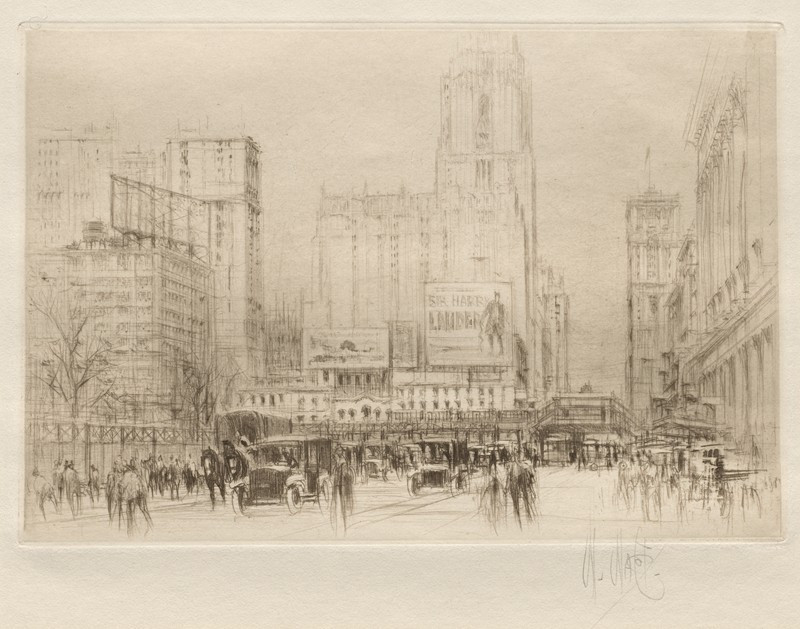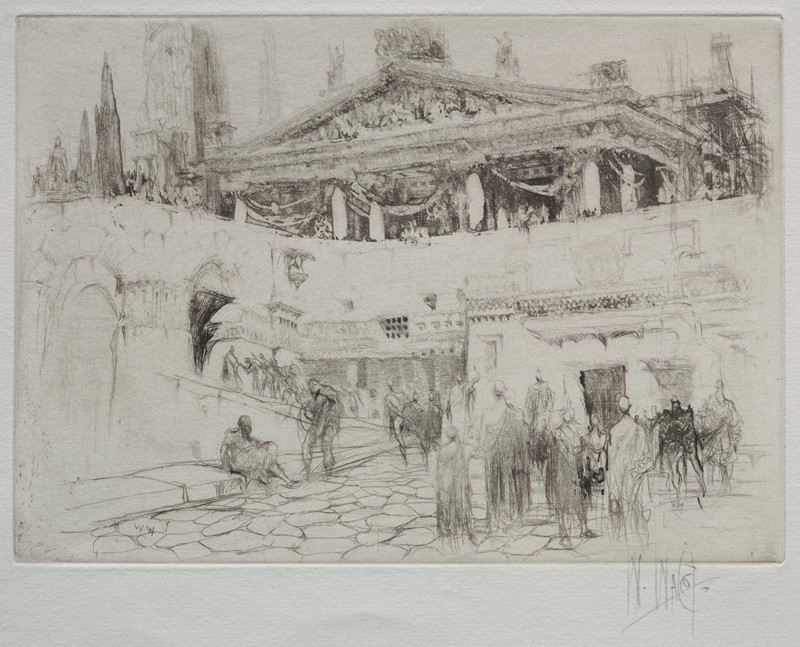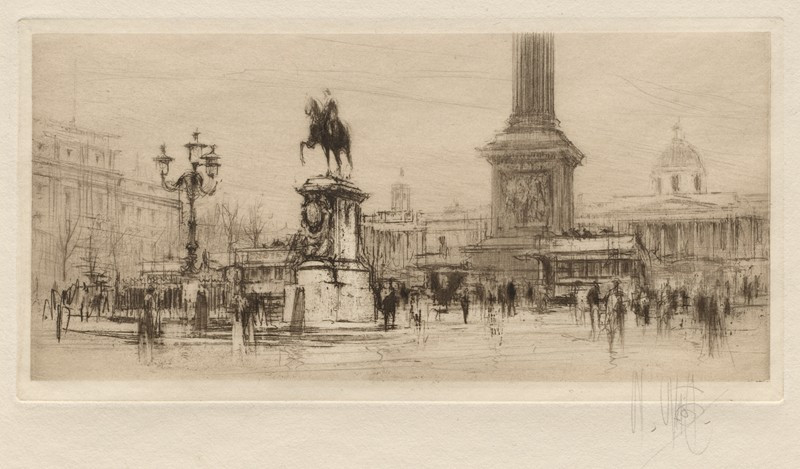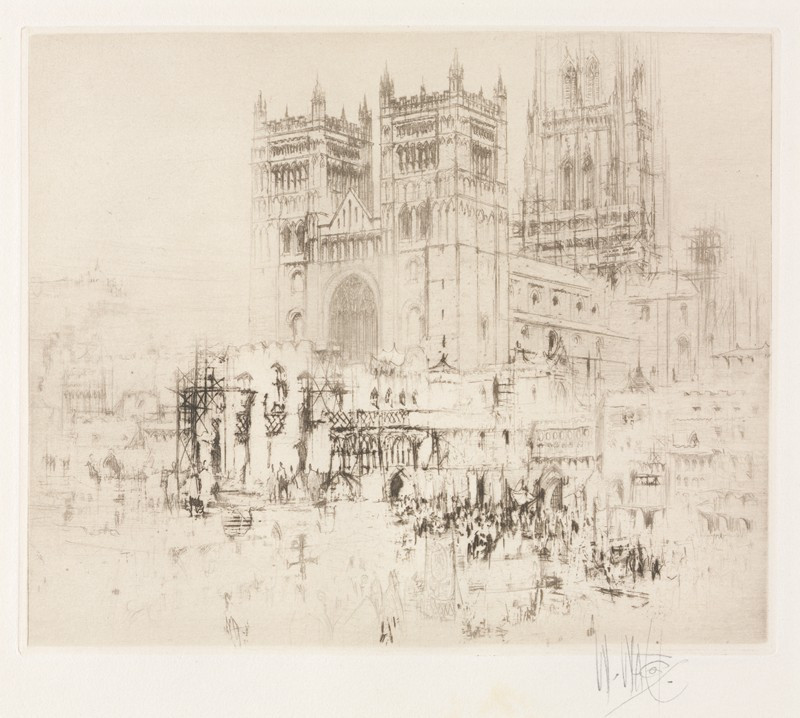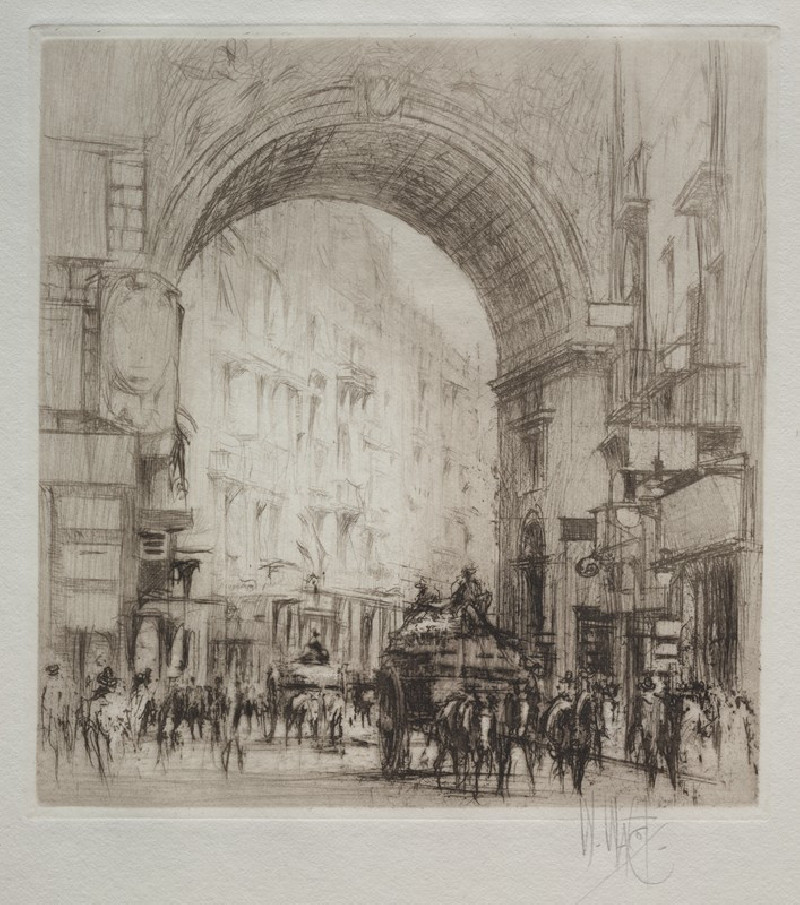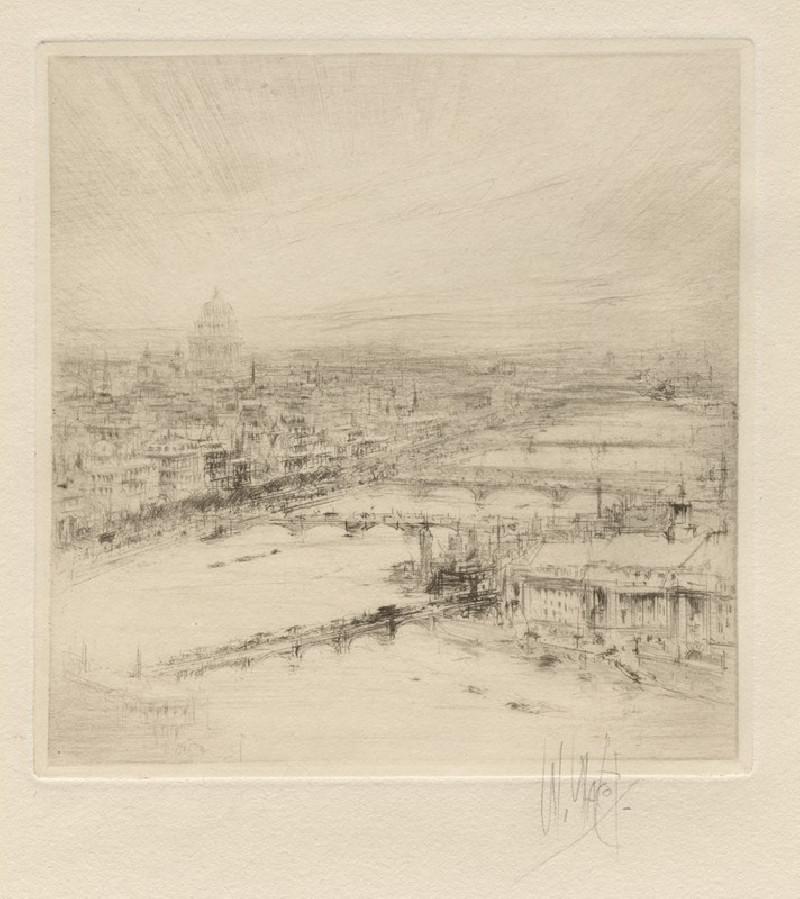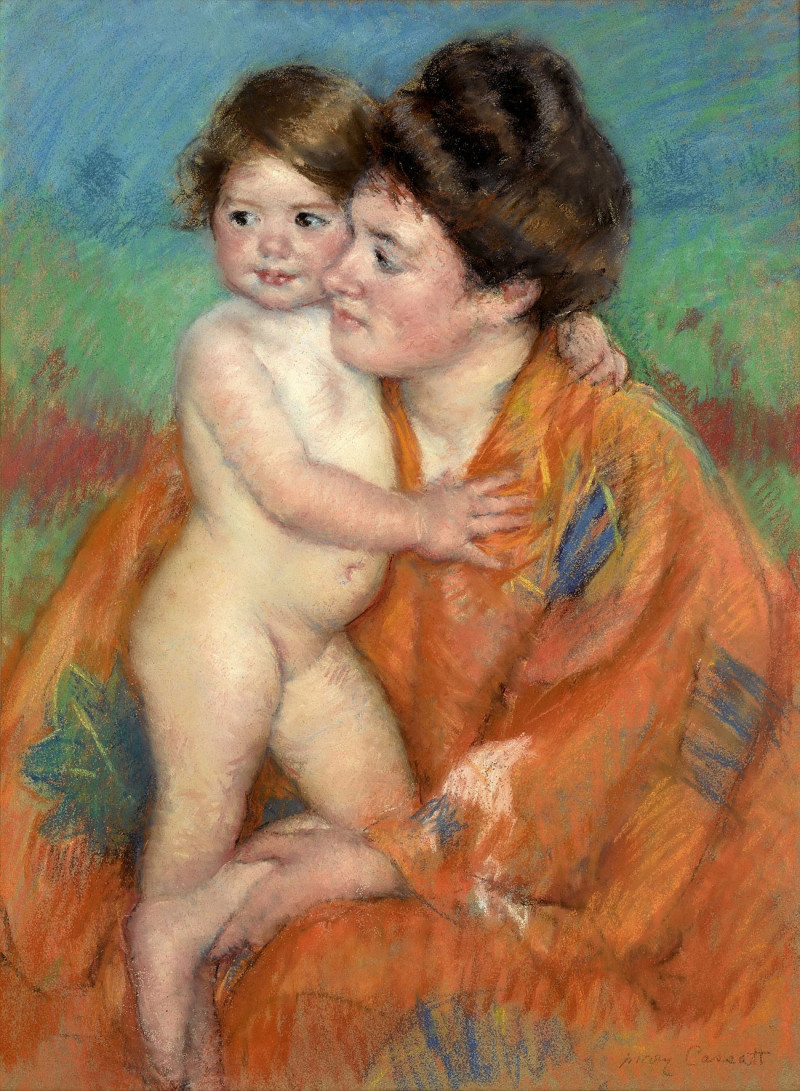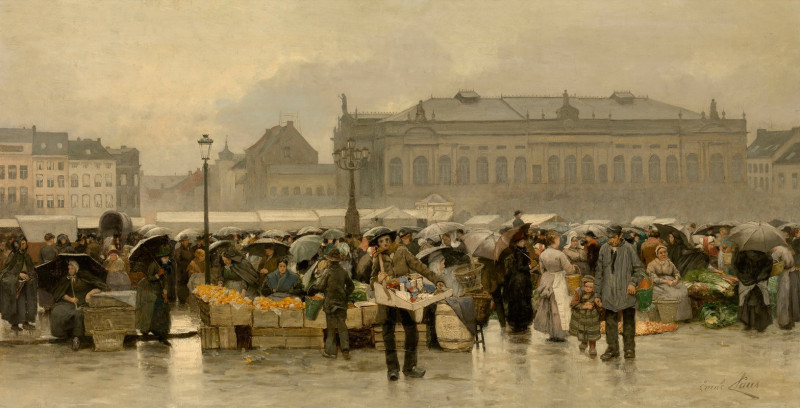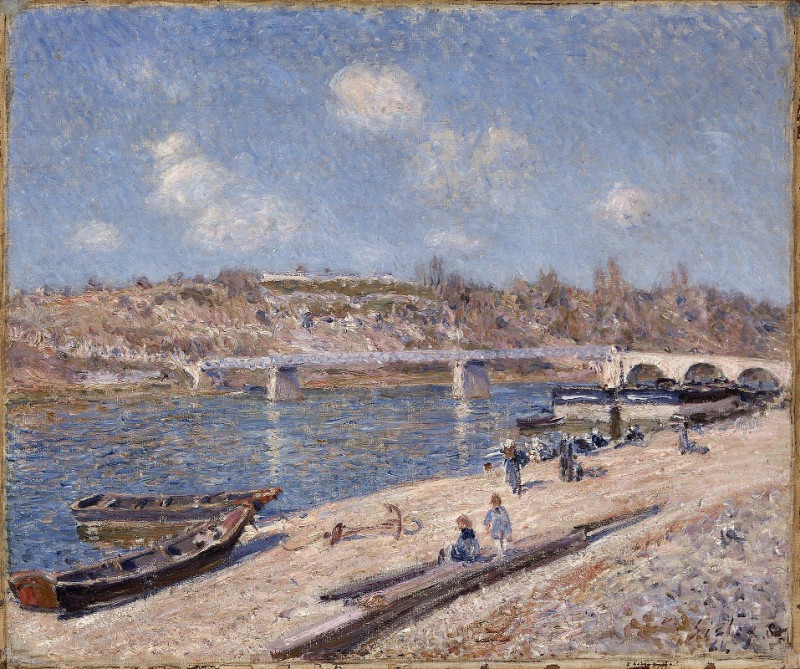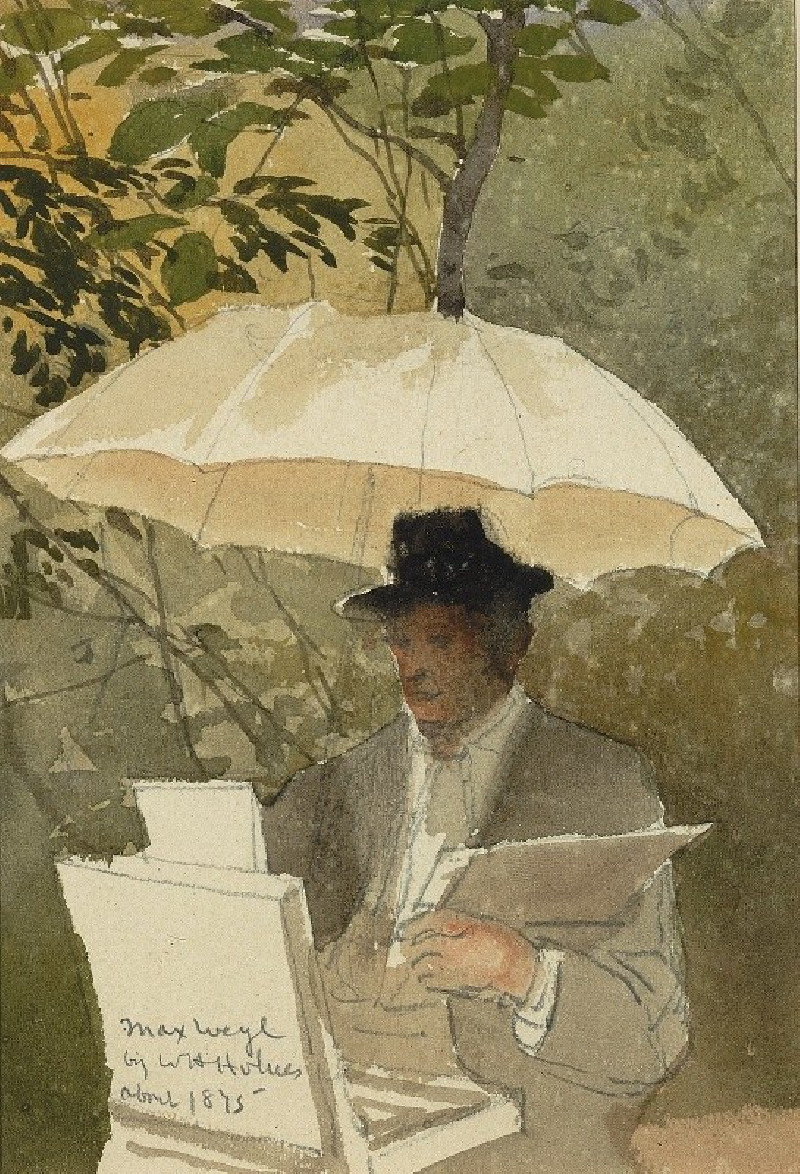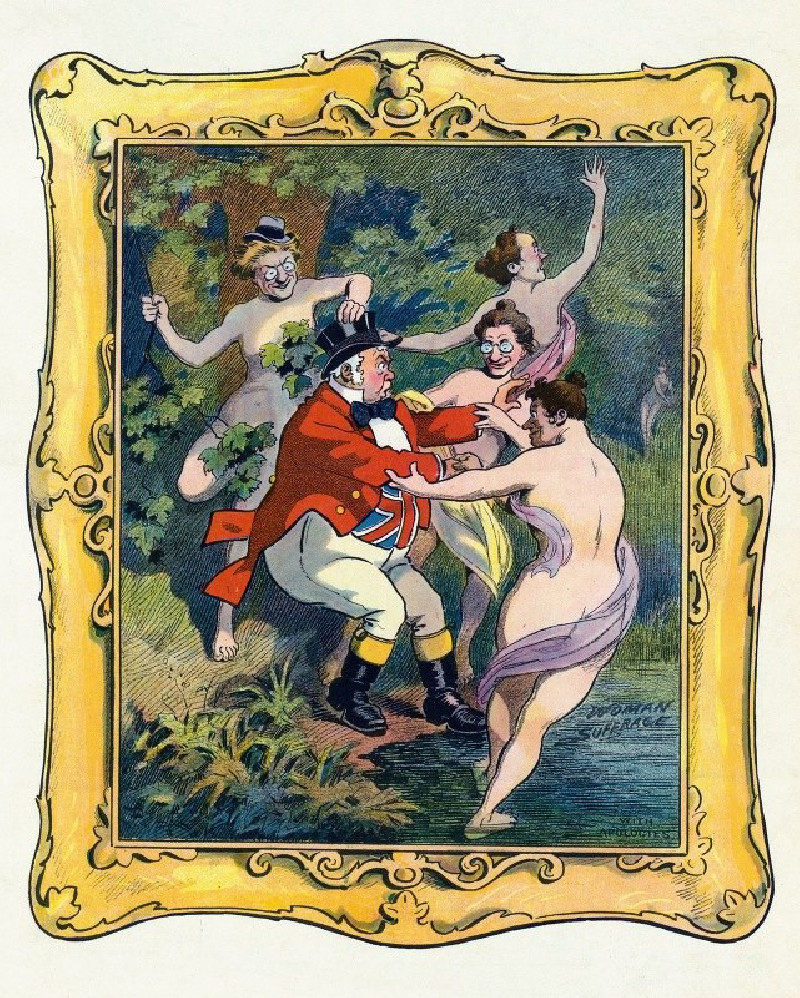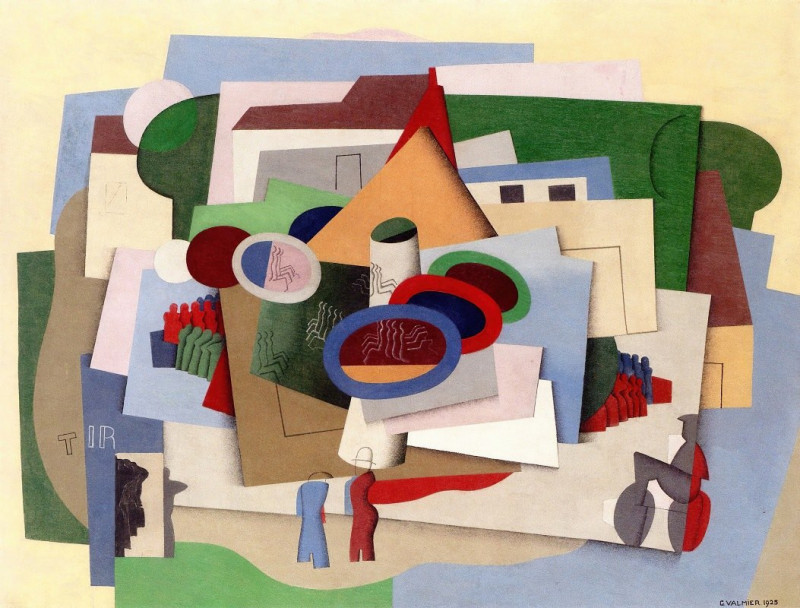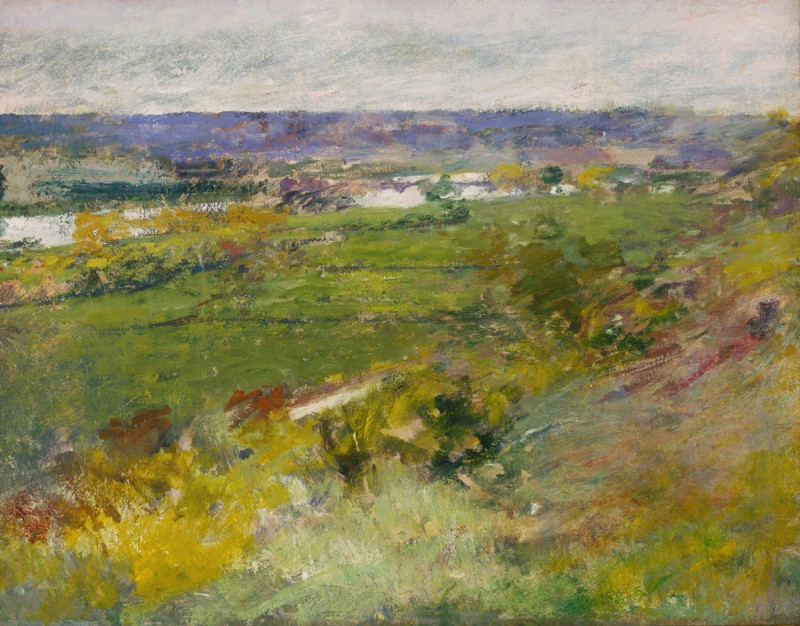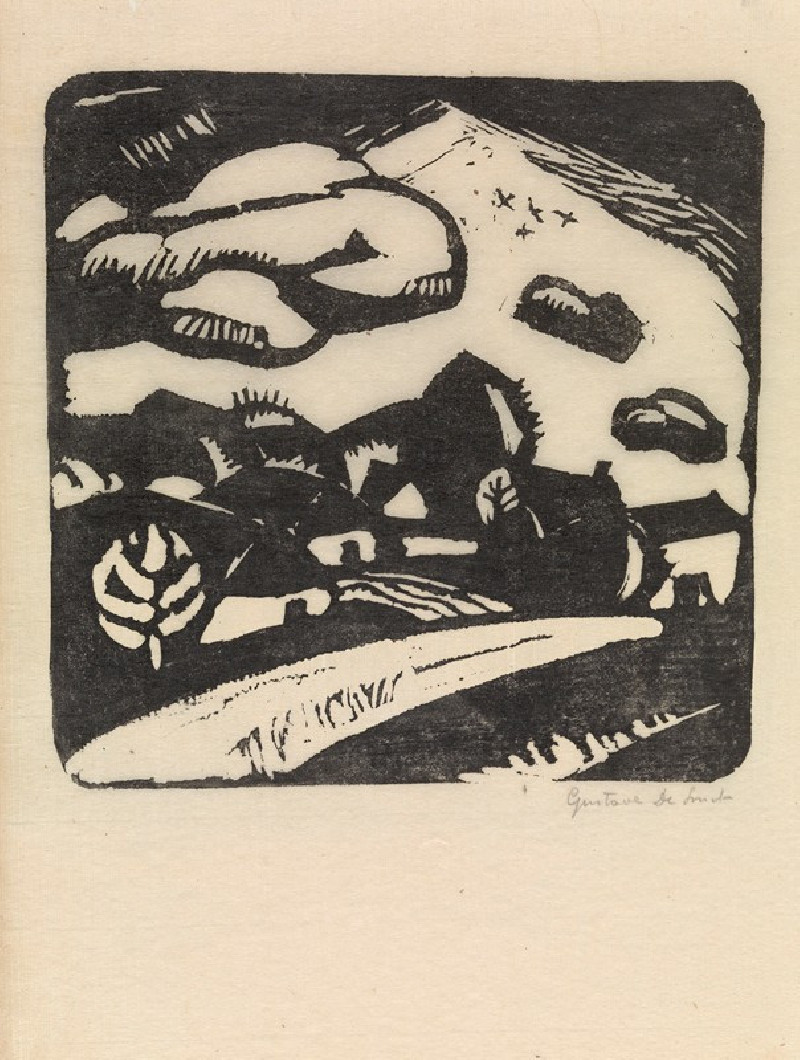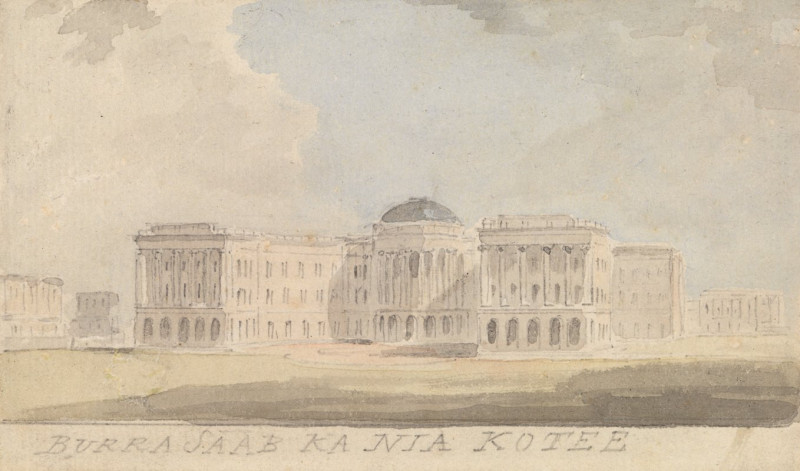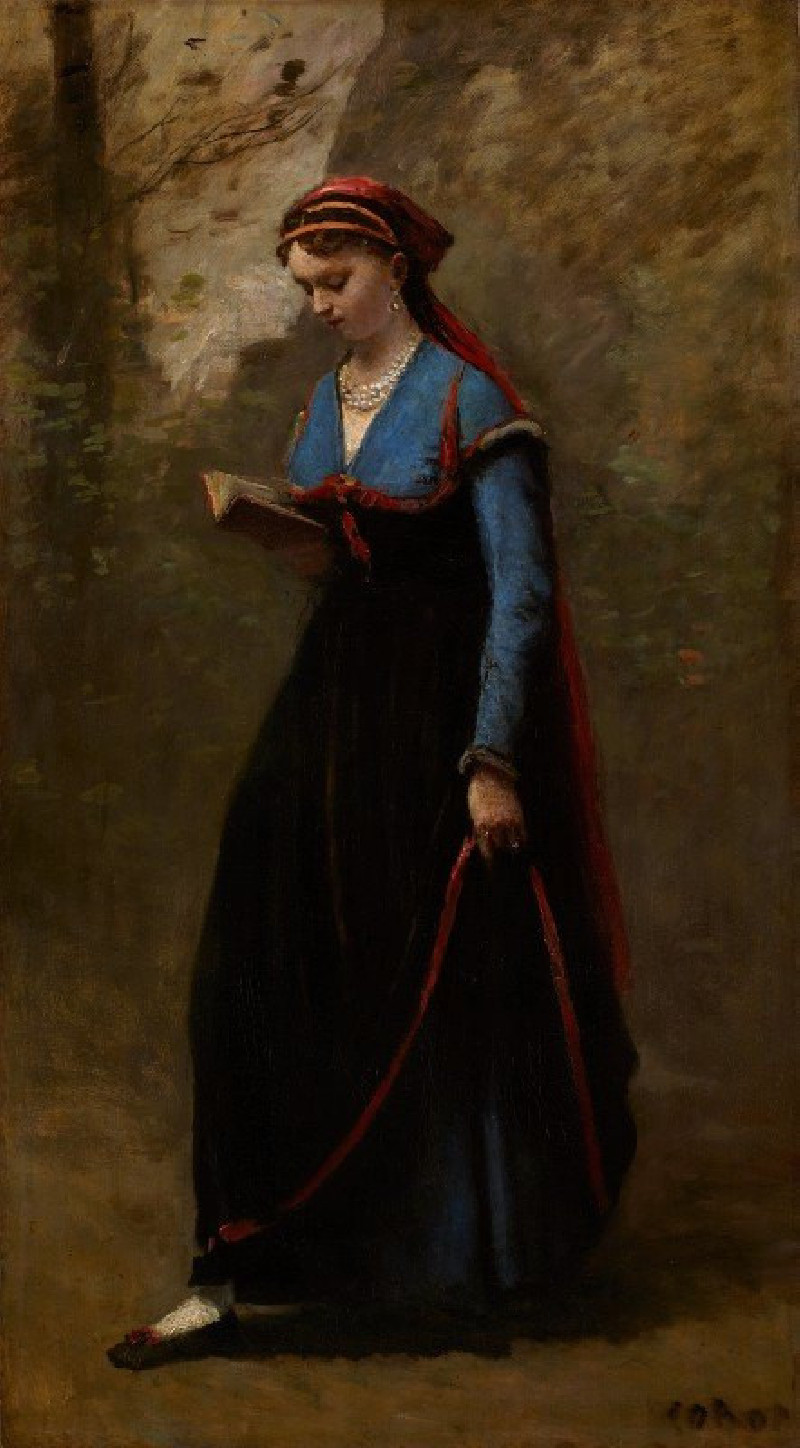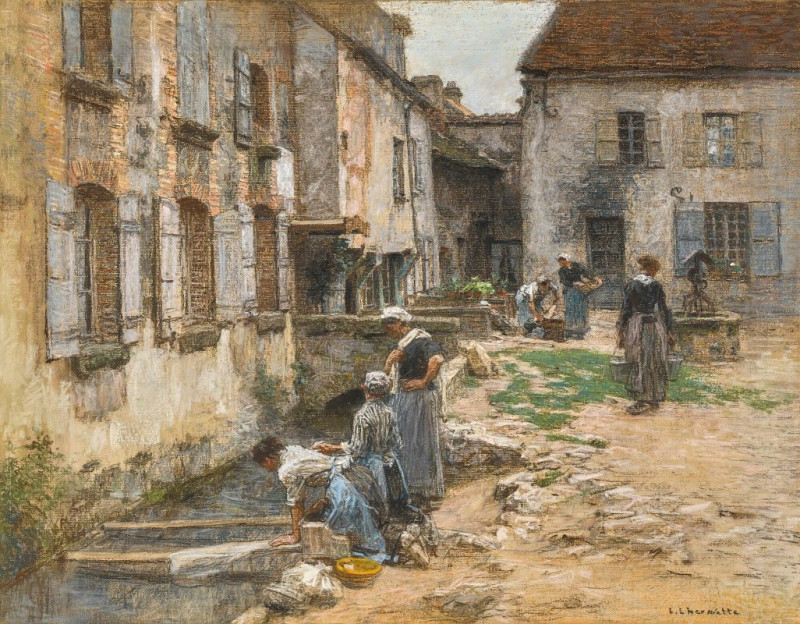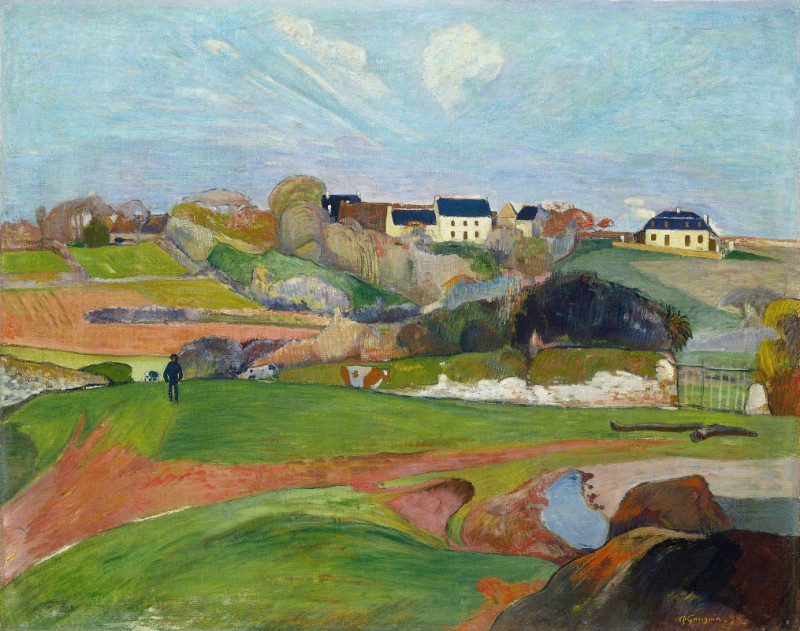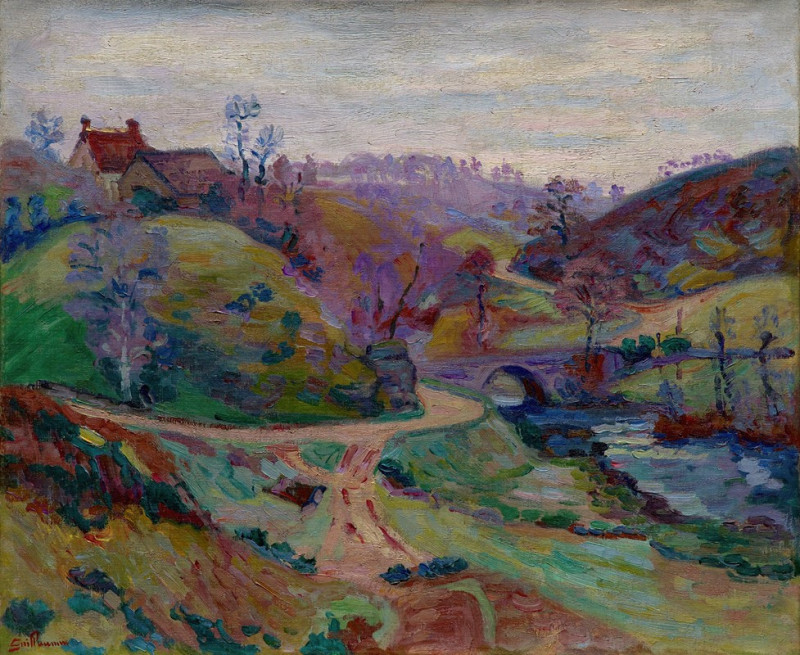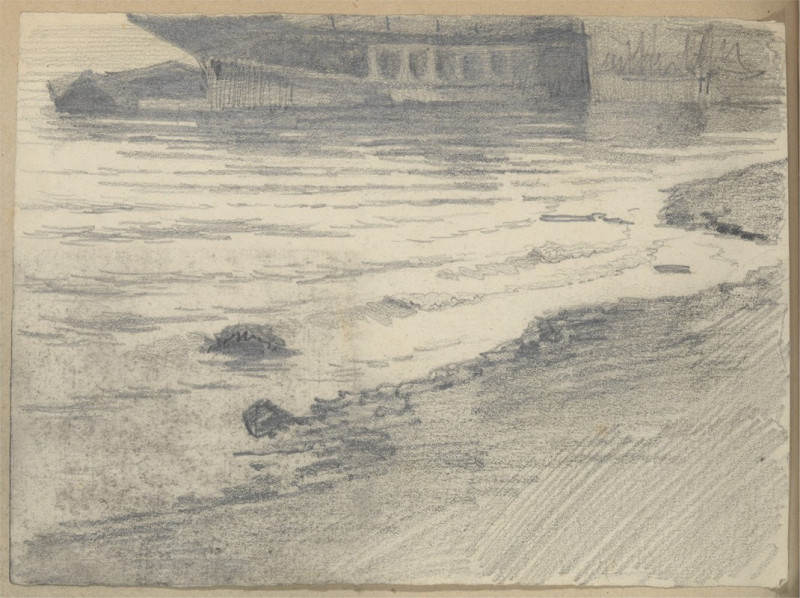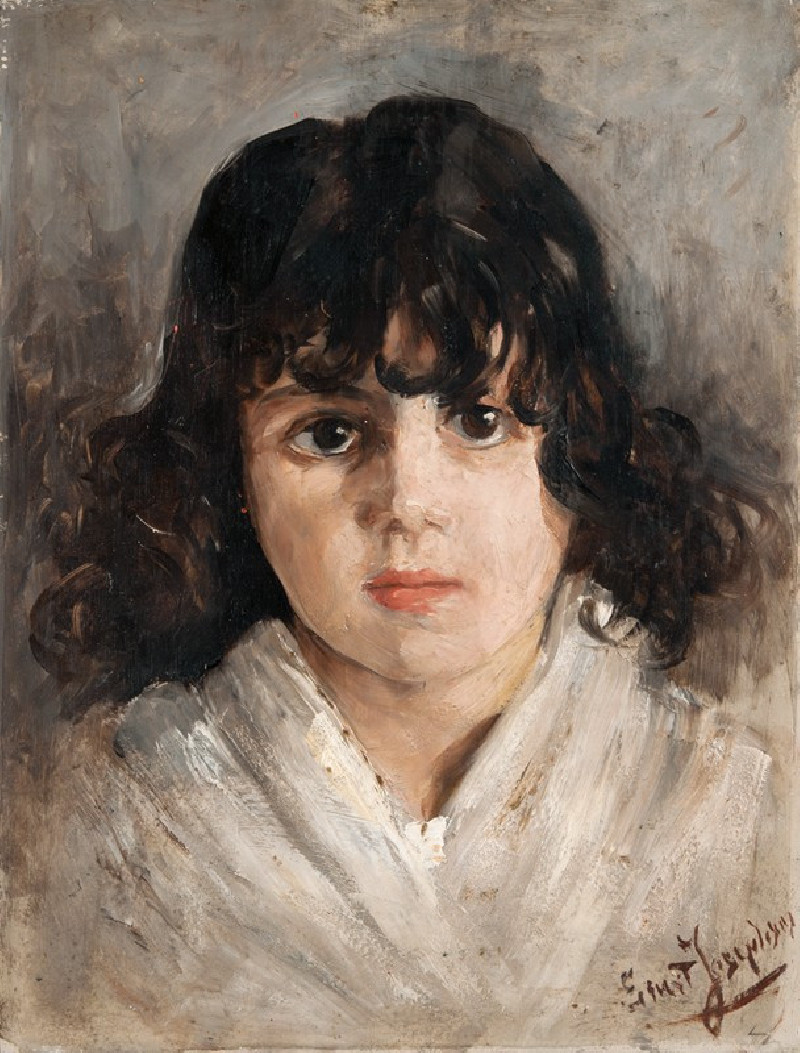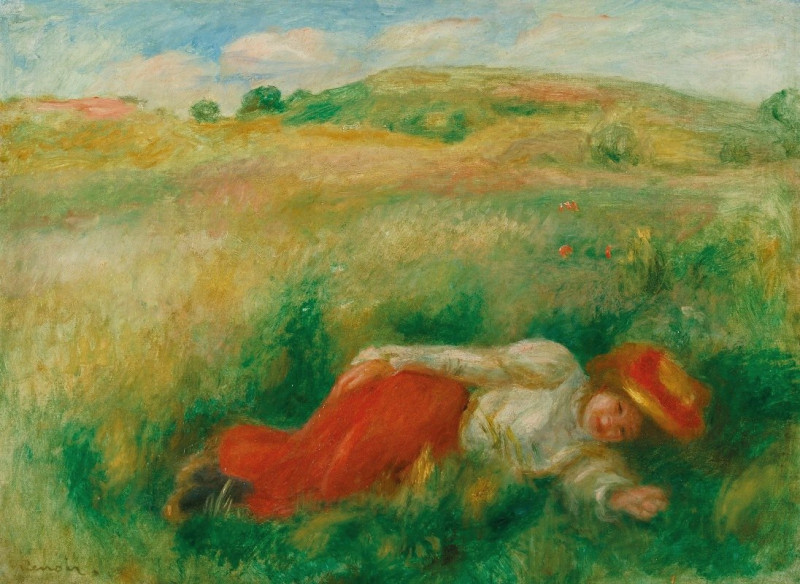Piccadilly Circus (with Criterion Theatre) (1924)
Technique: Giclée quality print
Recommended by our customers
More about this artwork
"Piccadilly Circus (with Criterion Theatre)" is a captivating etching by William Walcot, created in 1924. This piece offers a glimpse into the bustling energy of London's famed Piccadilly Circus during the early 20th century. Walcot masterfully captures the scene with a dynamic composition that teems with life and movement. The artwork shows a lively street scene where figures of people blend with the urban setting, evoking the vibrancy of city life.The Criterion Theatre, an iconic landmark, is subtly depicted, suggesting its presence rather than dominating the scene. This allows the viewer to feel the hustle and bustle of the location rather than focusing on specific architectural details. The etching is marked by a blend of detailed and loose strokes, creating a sense of depth and texture that draws the eye across the busy thoroughfare, the moving figures, and the elegant facades of the surrounding buildings.
Delivery
Returns
William Walcot RE was a Scottish architect, graphic artist and etcher, notable as a practitioner of refined Art Nouveau (Style Moderne) in Moscow, Russia (as Вильям Францевич Валькот). His trademark Lady's Head keystone ornament became the easily recognisable symbol of Russian Style Moderne. In 1920s–1930s, he concentrated on graphic art and was praised as "the best architectural draftsman" in London.

